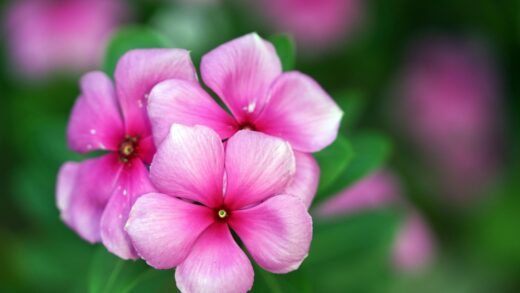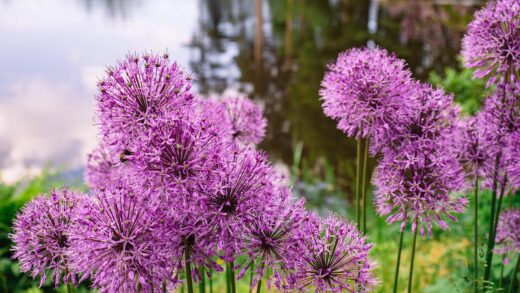Successfully establishing cherry laurel in the garden begins with proper planting techniques and an understanding of the plant’s fundamental needs. The process is more than simply digging a hole; it involves careful site selection, soil preparation, and post-planting care to ensure the shrub develops a strong root system and transitions smoothly into its new environment. A well-planted cherry laurel will grow more vigorously, exhibit better health, and be more resilient to environmental stresses like drought and cold. Similarly, understanding how to propagate this versatile shrub allows you to multiply your stock, create new hedges, or share plants with fellow gardeners, all from a single parent plant.
The timing of planting is a critical factor that can significantly influence the success of a new cherry laurel. The ideal times to plant are in the autumn or early spring. Autumn planting allows the root system to become established throughout the cooler, wetter months, giving the plant a strong head start before the heat and stress of the following summer. Spring planting is also effective, but it requires more diligent watering throughout the first growing season to ensure the young plant does not dry out. Avoid planting in the heat of mid-summer or when the ground is frozen in winter, as these conditions place extreme stress on the plant.
Soil preparation is arguably the most important step in the planting process. Cherry laurels insist on well-drained soil and will quickly suffer from root rot if their roots are left sitting in water. Before planting, it is essential to amend the native soil, especially if it is heavy clay or compacted. Incorporating generous amounts of organic matter, such as compost, leaf mold, or well-rotted manure, will improve the soil’s structure, aeration, and drainage. This creates a welcoming environment for the roots to expand and access the water and nutrients they need for healthy growth.
Once planted, the initial care provided in the first few weeks and months is vital. Consistent and deep watering is necessary to keep the root ball moist and encourage the roots to grow out into the surrounding soil. Applying a layer of organic mulch around the base of the plant will help conserve soil moisture, regulate soil temperature, and suppress competing weeds. This initial phase of care sets the stage for the plant’s long-term health and performance in the landscape, making the effort invested at the beginning a worthwhile endeavor.
Choosing the right time and location for planting
Selecting the optimal time for planting is a strategic decision that directly impacts the establishment of cherry laurel. Autumn is often considered the superior season for this task. The combination of warm soil from the preceding summer and cooler air temperatures creates ideal conditions for root growth without the stress of supporting a large amount of top growth. This extended period of root development over the autumn and winter months means the plant is better prepared to handle the heat and potential drought of its first summer. This head start can lead to a more robust and faster-growing shrub in the long run.
More articles on this topic
Spring planting is a viable alternative, particularly in regions with very severe winters. Planting after the last frost date allows the shrub to benefit from the entire growing season to establish its root system. However, the success of spring planting is heavily dependent on consistent moisture throughout the summer. The plant will be developing its roots and new foliage simultaneously, which places a high demand on its water resources. Gardeners who choose to plant in the spring must be committed to a regular watering schedule to prevent the young, developing root system from drying out during hot spells.
The choice of location is just as critical as the timing. Cherry laurels are adaptable but have clear preferences that lead to optimal health and appearance. A site that receives partial shade, especially protection from the intense afternoon sun, is ideal. This helps prevent leaf scorch and reduces water stress. It is also wise to consider the plant’s exposure to wind. A location sheltered from strong, prevailing winter winds will help prevent the evergreen foliage from drying out and browning, a common issue known as winter burn that can be quite unsightly.
Furthermore, you must account for the mature size of the cherry laurel cultivar you have chosen. These shrubs can vary significantly in their ultimate height and spread. Before digging, visualize the plant at its full size to ensure it will have adequate space to grow without being crowded by buildings, fences, or other plants. Providing enough room from the beginning prevents future problems such as poor air circulation, which can encourage fungal diseases, and avoids the need for constant, aggressive pruning to keep the plant in bounds.
Step-by-step planting guide
The first step in the physical act of planting is to dig a hole that is properly sized for the root ball of your cherry laurel. The hole should be dug approximately two to three times as wide as the root ball but only as deep as the root ball itself. Digging a wide hole is crucial as it loosens the surrounding soil, making it easier for the new roots to penetrate and expand outward. It is a common mistake to dig the hole deeper than the root ball, as this can cause the plant to settle over time, sinking too deep into the ground, which can lead to stem rot and other issues.
More articles on this topic
Once the hole is prepared, carefully remove the cherry laurel from its container. If the plant is pot-bound, meaning the roots are densely circling the inside of the pot, it is essential to gently tease them apart or make a few vertical cuts through the root ball with a sharp knife. This encourages the roots to grow outwards into the new soil rather than continuing to circle, which can inhibit the plant’s establishment. Place the plant in the center of the hole, ensuring that the top of the root ball is level with or slightly above the surrounding ground level.
After positioning the plant, begin backfilling the hole with the amended soil you prepared earlier. Fill the hole about halfway, and then water thoroughly to help settle the soil and eliminate any large air pockets around the roots. Once the water has drained away, finish backfilling the hole, gently firming the soil with your hands as you go. Avoid compacting the soil by stamping on it with your feet, as this can impede water drainage and root growth. Create a shallow basin or “well” of soil around the base of the plant to help direct water to the root zone during irrigation.
The final step after planting is to apply a layer of organic mulch and water the plant again, deeply and thoroughly. A two- to three-inch layer of mulch, such as wood chips or shredded bark, should be spread over the root zone, keeping it a few inches away from the main stem of the plant. This mulch layer is invaluable for conserving moisture, regulating soil temperature, and preventing weed competition. The initial deep watering ensures that the entire root zone is saturated, giving the plant the best possible start in its new location.
Initial care for newly planted laurels
Immediately following planting, the most critical aspect of care for a new cherry laurel is a consistent and appropriate watering regimen. The root system is not yet established enough to draw moisture from a large area, so it relies entirely on the water available in its immediate root ball. For the first few weeks, check the soil moisture every few days and water deeply whenever the top few inches of soil begin to feel dry. The goal is to keep the root zone consistently moist but not waterlogged. This frequent attention helps the plant overcome transplant shock and begin to send out new roots into the surrounding soil.
Throughout the first full growing season, and potentially the second, maintaining this focus on moisture is key. As the weeks progress, you can gradually reduce the frequency of watering but increase the amount of water applied each time to encourage deeper root growth. A long, slow soaking is much more effective than a quick, shallow spray. This practice trains the roots to grow downward in search of water, which will ultimately make the plant more self-sufficient and drought-tolerant in the future. The specific frequency will depend on your climate, soil type, and rainfall, so regular monitoring is essential.
While fertilizer is not immediately necessary if you have amended the soil with compost at planting time, you may consider a light application of a balanced, slow-release fertilizer in the first spring after planting. This can provide a gentle boost of nutrients to support the development of both roots and foliage. Avoid using strong, fast-acting fertilizers on newly planted shrubs, as this can burn the delicate developing roots. It is far better to focus on building healthy soil and providing consistent water, as these are the true foundations of successful establishment.
Monitor the newly planted cherry laurel for any signs of stress, such as wilting, yellowing leaves, or pest infestations. A certain amount of transplant shock is normal, but persistent symptoms may indicate an underlying problem, most commonly related to watering. Protect the young plant from physical damage and ensure weeds are kept at bay around its base, as they compete for vital water and nutrients. This period of initial care is a crucial investment that will pay dividends in the form of a healthy, vigorous, and beautiful shrub for many years to come.
Propagation through cuttings
Propagating cherry laurel from cuttings is an incredibly effective and popular method for creating new plants that are genetically identical to the parent. The best time to take cuttings is from mid-summer to early autumn, using semi-hardwood material. This refers to wood from the current season’s growth that has started to mature and firm up; it should be firm enough to resist easy bending but not yet fully woody and rigid. Select healthy, vigorous stems that are free from any signs of disease or pest damage for the highest chance of success.
To prepare the cuttings, use a sharp, sterilized knife or pair of secateurs to cut a 4- to 6-inch section from the tip of a healthy stem. Make the cut just below a leaf node, which is the point on the stem where a leaf emerges. Carefully remove the leaves from the lower half of the cutting, leaving only two or three leaves at the top. If the remaining leaves are very large, you can cut them in half horizontally to reduce water loss through transpiration while still allowing for photosynthesis. This process helps the cutting direct its energy toward root production rather than supporting a large leaf surface.
The next step is to encourage root development. While not strictly necessary, dipping the bottom inch of the cutting into a rooting hormone powder or gel can significantly increase the success rate and speed up the rooting process. The hormone stimulates the formation of adventitious roots from the cut stem. Prepare a pot or tray filled with a sterile, well-draining rooting medium, such as a mix of perlite and peat moss or coarse sand. Use a pencil or a dibber to make a hole in the medium, then insert the cutting, ensuring the nodes where you removed the leaves are buried.
Once the cuttings are planted, they require a warm, humid environment to root successfully. Water the medium thoroughly and cover the pot with a clear plastic bag or place it in a propagator to maintain high humidity. Place the cuttings in a bright location that receives indirect light, as direct sunlight can scorch them. Check the medium periodically to ensure it remains moist but not saturated. Roots typically begin to form within 6 to 10 weeks. You can check for rooting by gently tugging on a cutting; if you feel resistance, roots have formed, and the new plant can soon be potted on individually.
Propagation through seeds
While propagation from cuttings is more common and ensures an identical plant, growing cherry laurel from seed can be a rewarding, albeit longer, process. The first step is to collect the ripe fruits, which are small, dark purple to black cherries that typically mature in the autumn. It is important to harvest the seeds as soon as the fruits are fully ripe. The pulp of the fruit contains germination inhibitors, so it must be completely removed before the seeds can be sown. This can be done by mashing the fruits and washing the mixture with water until only the clean seeds remain.
Cherry laurel seeds require a period of cold, moist stratification to break their natural dormancy. This process mimics the natural winter conditions that the seeds would experience outdoors. After cleaning, the seeds should be mixed with a moist medium like sand, vermiculite, or peat moss. This mixture is then placed in a sealed plastic bag or container and stored in a refrigerator for approximately 90 to 120 days. It is important to check the mixture periodically to ensure it remains moist and free of mold. This cold treatment is essential for triggering the germination process.
After the stratification period is complete, the seeds are ready to be sown. This is typically done in the spring. Prepare a seed tray or pots with a well-draining, sterile seed-starting mix. Sow the seeds about half an inch deep and cover them lightly with the mix. Water the tray gently but thoroughly, ensuring good contact between the seeds and the soil. Place the tray in a location that is warm and receives bright, indirect light. A greenhouse or a cold frame provides an ideal environment for germination.
Patience is key when growing cherry laurel from seed. Germination can be slow and sometimes erratic, potentially taking several weeks or even months to occur. Keep the soil consistently moist but not waterlogged throughout this period. Once the seedlings have emerged and developed a few sets of true leaves, they can be carefully transplanted into individual pots to continue growing. It is important to remember that plants grown from seed may exhibit some genetic variation and may not be identical to the parent plant, which can lead to interesting and unique results.


















